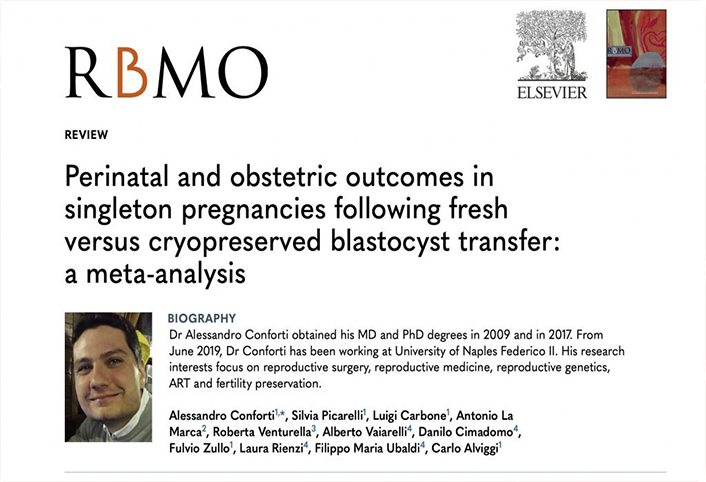
Perinatal and obstetric outcomes in singleton pregnancies following fresh versus cryopreserved blastocyst transfer: a meta-analysis
Alessandro Conforti, Silvia Picarelli, Luigi Carbone, Antonio La Marca, Roberta Venturella, Alberto Vaiarelli, Danilo Cimadomo, Fulvio Zullo, Laura Rienzi, Filippo Maria Ubaldi, Carlo Alviggi
RBMO Published:October 05, 2020 DOI:https://doi.org/10.1016/j.rbmo.2020.09.029
Abstract
The transfer of cryopreserved blastocysts is increasing in IVF centres. However, little is known about the perinatal and obstetric outcomes of this procedure. In an attempt to further elucidate these issues, a systematic review and meta-analysis was conducted to compare cryopreserved transfer with fresh blastocyst embryo transfer. The results show that the risk of both preterm (odds ratio [OR] 0.89, 95% confidence interval [CI] 0.80–0.99, P = 0.04) and low birthweight births (OR 0.82, 95% CI 0.68–0.99, P = 0.04) was significantly lower after cryopreserved blastocyst transfer than after fresh blastocyst transfer. The rate of large for gestational age births was significantly higher (OR 1.68, 95% CI 1.55–1.82, P < 0.00001) and the rate of small for gestational age births significantly lower (OR 0.59, 95% CI 0.54–0.65, P < 0.00001) after cryopreserved blastocyst transfer. The transfer of cryopreserved blastocysts was associated with a significantly lower risk of placental abruption (OR 0.58, 95% CI 0.40–0.83, P = 0.003) but a significantly higher risk of Caesarean section (OR 1.21, 95% CI 1.01–1.43, P = 0.03). In conclusion, the perinatal and obstetric outcomes associated with the transfer of cryopreserved blastocysts differ from those associated with fresh blastocyst transfer.
